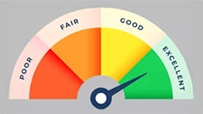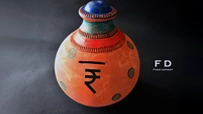How to Choose a Recurring Deposit Tenure that Matches Your Financial Goals
September 02, 2025

Choosing the right Recurring Deposit (RD) tenure is important for achieving your financial goals. Whether saving for a short-term purchase or planning for long-term financial security, understanding how to align your RD tenure with your objectives is key to successful investment planning. This guide will help you navigate the process of selecting the ideal savings duration for your recurring deposits.
Understanding Recurring Deposits
Before choosing RD tenure, let's briefly review a recurring deposit. An RD is a type of deposit account where you deposit a fixed amount regularly (usually monthly) for a predetermined period. At the end of this period, you receive the total amount invested plus the interest earned. RD tenure ranges from 6 months to 10 years. The interest is compounded and paid out on a quarterly basis.
Example: A family in India wants to save for their child's future education. They open a recurring deposit (RD) account with a monthly contribution of ₹5,000 for a 10-year tenure. At the end of the 10 years, they receive the total amount invested (₹5,000 x 12 months x 10 years = ₹600,000) plus the accumulated interest, which can be used to fund their child's college education.
Disclaimer: The above example is for illustration purpose only. Ujjivan SFB does not take any responsibility for the accuracy of the information. Please use a Savings Account Calculator and Recurring Deposit Calculator or consult with a financial expert for better understanding.
Factors to Consider When Choosing RD Tenure
Financial Goals
The primary factor in choosing RD tenure should be your financial goals. Are you saving for a short-term goal like a vacation or a long-term goal like retirement? Your goals will significantly influence the duration of your RD.
Time Horizon
Closely related to your goals is your time horizon. Short-term goals typically require RDs with shorter tenures (6 months to 2 years), while long-term goals may benefit from longer tenures (3-10 years).
Interest Rates
Generally, longer RD tenures offer higher interest rates. However, this shouldn't be the sole factor in your decision. Balance the potential for higher returns with your liquidity needs and financial goals.
Liquidity Needs
Consider how soon you might need access to your funds. Shorter RD tenures provide more liquidity but may offer lower returns. Assess your cash flow and emergency fund situation when choosing RD tenure.
Risk Tolerance
While RDs are generally low-risk investments, longer tenures do carry some interest rate risk. If interest rates rise significantly during your RD term, you might miss out on higher returns.
Matching RD Tenure to Different Financial Goals
Short-Term Goals (1-3 years)
For goals like saving for a vacation, home appliances, or building an emergency fund, consider RD tenures of 6 months to 3 years. This tenure provides a balance between growth and accessibility.
Medium-Term Goals (3-7 years)
Goals such as saving for a down payment on a house or funding your child's education in a few years might benefit from RD tenures of 3 to 7 years. This duration allows for more substantial growth while still providing a clear timeline.
Long-Term Goals (7 - 10 years)
For long-term financial goals like retirement planning or creating a significant wealth corpus, consider RD tenures of 7 years or more. These longer durations typically offer higher interest rates and allow your savings to compound over time.
Strategies for Effective Investment Planning with RDs
Ladder Strategy
Instead of putting all your savings into one long-term RD, consider creating a ladder of RDs with different tenures. This strategy provides periodic liquidity while benefiting from higher interest rates on longer-term deposits.
Use a Recurring Deposit Calculator
A recurring deposit calculator is a type of financial calculator that gives you an estimate of your recurring deposit returns. You can adjust the tenure of RD with the help of the calculator and check which tenure is best aligned with your financial goals and aspirations.
Goal-Based RDs
Open separate RDs for each of your financial goals. This approach helps you track progress towards individual objectives.
Combine with Other Investments
While choosing RD tenure, consider how it fits into your overall investment planning. RDs can provide a stable, low-risk component to complement your portfolio's potentially higher-risk investments.
Regular Review
Periodically review your RD strategy. As your financial goals evolve or circumstances change, you may need to open new RDs.
Final Thoughts
Choosing the right RD tenure is crucial in aligning your savings strategy with your financial goals. By considering your objectives, time horizon, liquidity needs, and overall investment planning, you can make informed decisions about the ideal tenure for your recurring deposits.
Remember, there's no one-size-fits-all approach to choosing RD tenure. Your decision should be based on your unique financial situation and aspirations.
Start small, dream big! Invest in Ujjivan Small Finance Bank’s Recurring Deposit and enjoy higher interest rates! Save for your long- and short-term goals with our RD and live a stress-free financial life. Start investing with just ₹100!
Disclaimer:
The contents herein are only for informational purposes and generic in nature. The content does not amount to an offer, invitation or solicitation of any kind to buy or sell, and are not intended to create any legal rights or obligations. This information is subject to updation, completion, amendment and verification without notice. The contents herein are also subject to other product-specific terms and conditions, as well as any applicable third-party terms and conditions, for which Ujjivan Small Finance Bank assumes no responsibility or liability.
Nothing contained herein is intended to constitute financial, investment, legal, tax, or any other professional advice or opinion. Please obtain professional advice before making investment or any other decisions. Any investment decisions that may be made by the you shall be at your own sole discretion, independent analysis and evaluation of the risks involved. The use of any information set out in this document is entirely at the user’s own risk. Ujjivan Small Finance Bank Limited makes no representation or warranty, express or implied, as to the accuracy and completeness for any information herein. The Bank disclaims any and all liability for any loss or damage (direct, indirect, consequential, or otherwise) incurred by you due to use of or due to investment, product application decisions made by you on the basis of the contents herein. While the information is prepared in good faith from sources deemed reliable (including public sources), the Bank disclaims any liability with respect to accuracy of information or any error or omission or any loss or damage incurred by anyone in reliance on the contents herein, in any manner whatsoever.
To know more about Ujjivan Small Finance Bank Products Visit:"https://www.ujjivansfb.in"
All intellectual property rights, including copyrights, trademarks, and other proprietary rights, pertaining to the content and materials displayed herein, belong
to Ujjivan Small Finance Bank Limited or its licensors. Unauthorised use or misuse of any intellectual property, or other content displayed herein is strictly prohibited and the same is not intended for distribution to, or use by, any person in any jurisdiction where such distribution or use would (by reason of that person’s nationality, residence or otherwise) be contrary to law or registration or would subject Ujjivan Small Finance Bank Limited or its affiliates to any licensing or registration requirements.
FAQs
1. What is the minimum tenure for a Recurring Deposit?
Most banks offer RDs with minimum tenures of 6 months. However, some may have options for shorter durations, like 3 months.
2. Can I change my RD tenure after opening the account?
Generally, RD tenures cannot be changed after opening. It's crucial to choose your tenure carefully at the start.
3. How does RD tenure affect interest rates?
Typically, longer RD tenures offer higher interest rates. However, rates can vary between financial institutions, so compare options.
4. Is it better to choose a longer RD tenure for higher returns?
Longer tenures often provide higher returns, but consider your liquidity needs and financial goals when making this decision.
5. Can I have multiple RDs with different tenures?
You can open multiple RDs with varying tenures to meet different financial goals and maintain liquidity.
6. What happens if I need to withdraw money before the RD tenure ends?
Premature withdrawal usually results in a penalty and reduced interest. Check your bank's specific policies before withdrawing early.
7. How should I choose RD tenure for short-term goals?
For short-term goals, consider RD tenures of 6 months to 3 years to balance growth and accessibility.
8. Is it possible to extend my RD tenure after maturity?
Some banks allow you to renew or extend your RD after maturity. Check with your bank for specific options.
9. How does inflation affect my choice of RD tenure?
Consider choosing a tenure and interest rate that outpaces inflation to ensure real savings growth.
10. Can I use RDs with different tenures as part of my investment diversification strategy?
Yes, using RDs with various tenures can effectively diversify your investments and manage risk.
Latest Blogs

Gold Loan LTV Ratio Explained (75% to 85%): What It Means for Borrowers
March 20, 2025
In June 2025, the Reserve Bank of India (RBI) introduced a significant relaxation for gold loan borrowers: the maximum Loan-to-Value (LTV) ratio for loans below ₹2.5 lakh was raised to 85%, up from the long-standing cap of 75%. Loans between ₹2.5 lakh and ₹5 lakh can now go up to 80%, while loans above ₹5 lakh continue under the 75% ceiling.

Good Debt vs Bad Debt: Learn the Difference
August 13, 2025
Every month, millions of Indians wait for the familiar debit alert, an EMI deducted from their account.

Got a Tax Refund? 5 Smart Ways to Put Your 2025 Refund to Work
August 13, 2025
For many taxpayers, there’s a unique sense of relief when a tax refund arrives.

Credit Score Not Improving? 5 Mistakes You Might Be Making
August 13, 2025
For most of us, a credit score feels like a silent judge sitting in the background of our financial lives.

Banking Jargon Decoded: 15 Key Terms You Should Know
May 13, 2025
Banking feels simple on the surface; deposit money, withdraw when needed, pay bills, or transfer funds.





